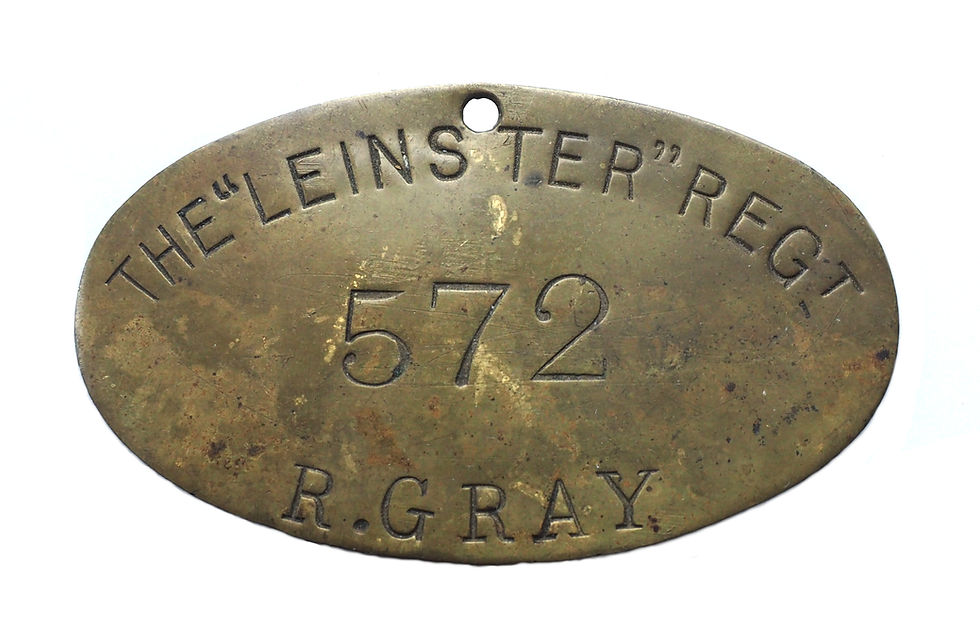The burning of Charles Fort, Kinsale on 10 August 1922
- Stephen Callaghan
- Nov 24, 2023
- 4 min read
In todays special guest post by Fergal Browne, we look at the burning of Charles Fort.

On 6 December 1921, the Anglo-Irish Treaty was signed. On 20 February 1922, the British Army in the form of the Essex Regiment evacuated both Kinsale Military Barracks and Charles Fort. In the case of Kinsale Military Barracks, a formal handover took place, with representatives of the local IRA meeting British Officers, including an officer of the Royal Engineers who went through the inventory with them.
However, in Charles Fort, there were no such courtesies observed. Relations between the Essex Regiment, who had been based in the fort, and the locals were so poor that such a handover was rendered extremely unlikely. Frederick Clarke, then an officer in the Essex Regiment and later a Brigadier General in the British Army, left a written account of the Essex Regiment’s departure:
‘It must have been in the autumn of 1921 that we moved back to Fort Charles [sic]. By this time we knew we were going to evacuate Southern Ireland. How we hated the idea of giving this fine old fort, which had the arms of Queen Elizabeth I carved in stone on the front wall of the officer’s quarters. We tried to get it out of the wall, but found that it had been carved on a huge block of stone which we were unable to move.
Every officer and other rank felt angry and ashamed as we marched out in the dark from the fort, which had been held by British troops for almost 350 years. We did not see the rabble waiting somewhere nearby to take over the fort, which they never would have captured, but which our politicians had given to them.’’

Both military installations remained occupied by the IRA throughout the summer of 1922. Caution was still observed in certain quarters in Kinsale. When a daughter of the Anglo-Irish Meade family of Ballymartle House married a serving officer in the British Indian Army at Ringcurran Church, Kinsale in June 1922, her family instructed him not to wear his military uniform at his wedding, for fear of attracting unwanted attention.
At the advent of Civil War, the vast majority of the IRA based in Kinsale joined the Anti-Treaty side. In August 1922, notices were posted around Kinsale advertising an auction which was held in the ‘Drill Hall’ near Charles Fort. At this auction, which was organised by the Anti- Treaty IRA, various items, such as bedding, tables and chairs from Charles Fort were sold to the general public.
On 8 August, Free State forces landed at Passage West, Union Hall and Youghal and moved on Cork City, then in Anti-Treaty hands. With the fall of Cork City on 10 August 1922, Anti-Treaty forces began retreating west. On the night of 10 August, soldiers from the Anti-Treaty garrison of Charles Fort entered Barry’s Pub in Summercove at around 2am and ordered a local man, Patrick O’Driscoll of Knocknapogree, to bring the horse and cart, which he had parked outside, to the fort. Some last remaining items were removed in the cart and Charles Fort was then set alight at 3am. Fearing that Kinsale town was soon to be captured by the Free State Army, the Anti-Treaty IRA also burned Kinsale Barracks, the Kinsale Club (now the Bowling Green), the Coastguard Station, the RIC Police Barracks and commandeered cars and lorries from Kinsale businesses, including Henry and Fred Robertson, James O’Neill & Sons and John Murphy. Several bridges, including railway bridges, leading to the town were also destroyed.
On 20 August 20 1922 – two days before General Michael Collins - Free State Commander-in-Chief - was killed in an ambush at Beal na mBláth, the Free State Army captured Kinsale. Prior to the attack, Anti-Treaty forces had blocked all approach roads to the town and strengthened their posts on the hills commanding Kinsale Harbour. The Anti-Treaty Forces believed that the Free State attack would come from the Bandon direction via Quartertown and Shippool and had therefore concentrated on these districts. Instead, the Free State Army advanced from Ballinadee to Castlepark. Lead by Brigadier General Sean Hales and Commandant Byrne, the Free State troops crossed the harbour from Castlepark to the extreme western edge of Kinsale, in open boats – the first boat being the ferry normally used by the general public to cross the Bandon River. As the boats crossed the harbour, they came under rifle fire from Anti-Treaty positions on Compass Hill. Free State soldiers at Castlepark returned fire with machine guns. 150 Free State Soldiers landed in Kinsale and occupied positions around the town. Most of the Anti-Treaty forces escaped. On the night of 30 August they launched a counterattack on Kinsale, and fighting lasted for half an hour before the attack was beaten off.
As both military barracks’ in Kinsale had been burned, the Free State Army occupied the Workhouse, now Kinsale Hospital, the remaining inmates being sent to the Cork County Home. Among them was one James Wilkinson – who had been born in Kinsale Workhouse in July 1846 and had returned there in his old age. By September 1922 Kinsale was considered sufficiently secure for a detachment of Free State soldiers to be sent to Bandon via Innishannon. At Innishannon, they stopped to repair the bridge, and came under sniper fire from the surrounding hills.
The ruins of Charles Fort smouldered for at least three days. For many years after its burning, the ruins were left quietly to decay and for a time in the 1960s it was occupied by hippies. Fortunately, in recent years it has been developed into a major tourist attraction. The roofless ruins remain to commemorate a turbulent time in Irish history.





Comments